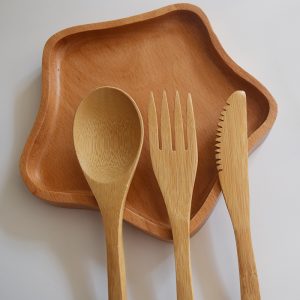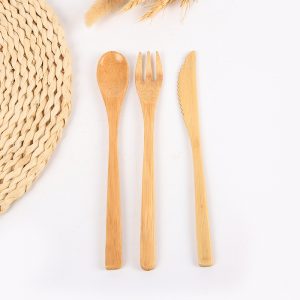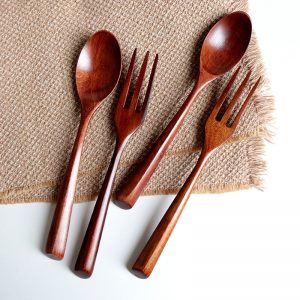Eat baking soda, bitter tea powder, tea water
There is no difference between the way you paint and the unpainted tableware. It can be washed with food grade baking soda powder and bitter tea powder. If the tableware is greasy, it can be washed with tea water or tea leaves. The tea contains theophylline and helps to remove oil. When cleaning, you can soak the tableware in the tea to remove oil, or you can put the tea residue in a small filter bag to wipe off the grease. In addition, you can also use a neutral detergent to clean, but be careful to clean the unpainted tableware, detergent will inevitably penetrate into the pores of the wood, it is recommended not to use a detergent to avoid residual fragrance.
Use a soft sponge, avoid soaking for too long
It is best to clean the wooden tableware with a soft sponge to gently remove the oil. Never use loofah or steel balls, or wash them with hard-toned forks, knives, and cutting boards. These hard materials can peel off the surface of wooden tableware, or cause scratches and dirt. Nanoscale.
It is best not to soak for too long when washing. To soften the food residue stuck on the tableware, the soaking time is preferably controlled for 5 to 10 minutes. The wood is soaked for too long, prone to spoilage and mildew.

Wash and dry in a cool, dry place
After washing the dishes, it is best to dry the water immediately or place it in a dry, cool place. Be careful not to place it in a place with high temperature or moisture, such as a refrigerator, a water dispenser, or a rice cooker; it is not recommended to expose it directly. If the temperature is too high or the moisture is too heavy, it will easily crack, deform and breed bacteria. You can also turn off the power by slightly heating the oven for 5 minutes, and use the remaining temperature to quickly dry the wood tableware.
Do not put it in a closed cabinet when not in use
It is best to put the tableware after washing and drying in a ventilated and cool place. It is not recommended to put it directly into the cabinet. Otherwise, when the air humidity is high, especially in the rainy season, the wooden tableware is put into the closed cabinet, and if it is not used for a long time, it is easy to absorb the moisture in the air and mold.
In addition, the hardness of the wood is low, and it is easy to have scratches due to collision. It is recommended to open it with other metal tableware when stowed.

Regularly apply olive oil to maintain wood and restore bright color
Wooden cutlery should be regularly maintained as skin. It takes a long time for the tableware to lose the bright color of the original wood. Just like the skin is coated with lotion every day, a thin layer of olive oil is regularly applied to the tableware to restore the luster of the wood. However, it should be noted that the pores of the wood will be contaminated with scent. It is not recommended to use scented sesame oil, nor to apply too much to avoid the smell of oil.
Sterilize with warm water, do not use alcohol
The tableware has been used for a long time and you should not use alcohol. High-concentration alcohol will destroy the surface coating of wood. If you want to sterilize, use 50~60°C warm water to soak it, which is a bit hot but can still bear the heat. The hot temperature is not recommended.

Even if it is properly cleaned and stored, wooden tableware has a certain period of use. When the tableware has been used for a long time, it is necessary to observe whether the tableware is discolored, worn, cracked or even attached to mildew. If it is, it should be replaced immediately. Damaged tableware is prone to mold, and the damage of long-cut tableware is never lower than that of plastic products. If you want to use wooden utensils with peace of mind and follow the above tips, you can let your family feel at ease and worry.
